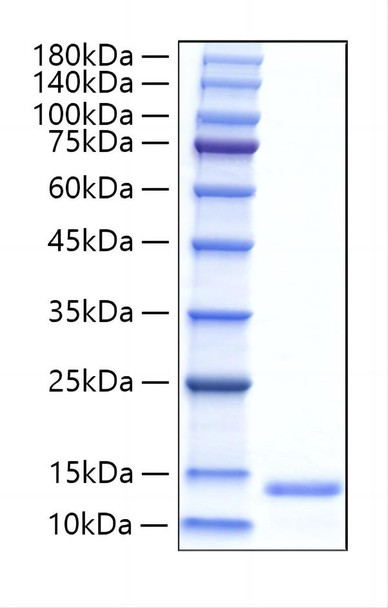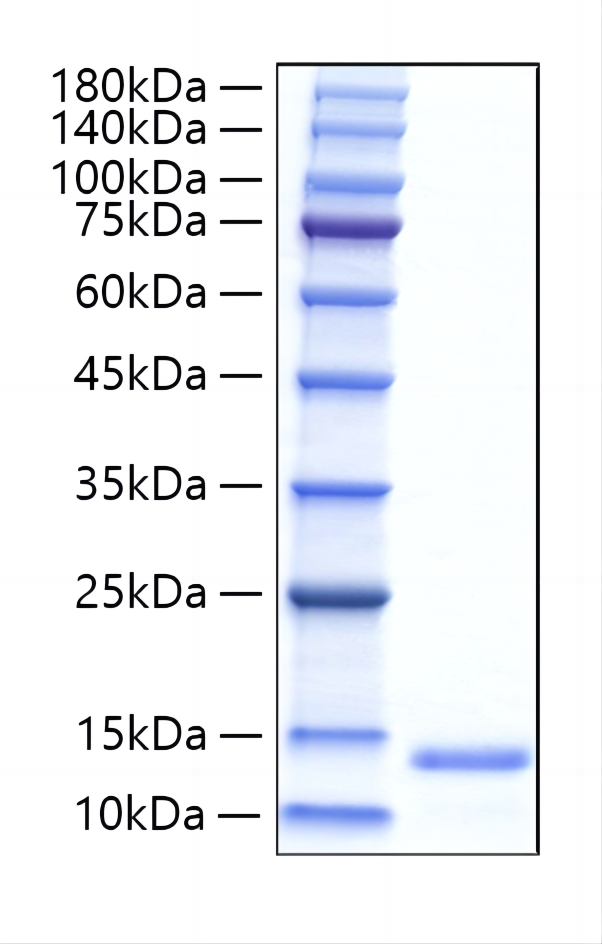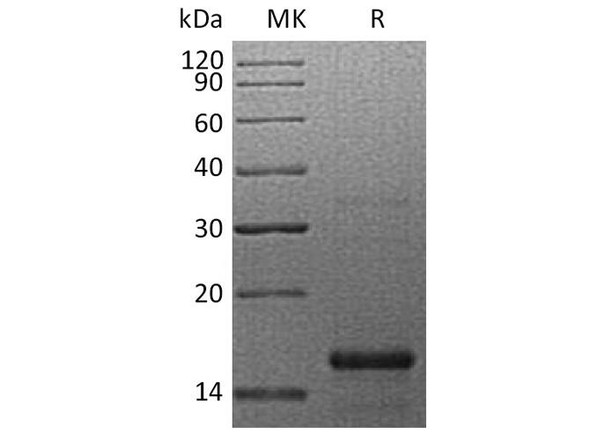Description
Recombinant Human GFER/ALR Protein
The Recombinant Human GFER/ALR Protein is a biologically active recombinant protein that plays a significant role in various cellular processes and signaling pathways in human biology. This protein is widely employed in immunological research, cell biology studies, protein-protein interaction analyses, and therapeutic development, providing researchers with a reliable tool for investigating GFER/ALR function and its implications in health and disease.
This product (SKU: RPCB1769) is produced using E. coli and features a N-His tag for convenient detection and purification. The protein exhibits a calculated molecular weight of 17.3 kDa with an observed molecular weight of 15 kDa under denaturing conditions, achieving ≥ 90 % as determined by SDS-PAGE., ensuring exceptional quality and consistency for research applications.
Key Features
| High Purity by Affinity Chromatography | |
| Mammalian & Bacterial Expression Systems | |
| High lot-to-lot consistency via strict QC |
| Product Name: | Recombinant Human GFER/ALR Protein |
| SKU: | RPCB1769 |
| Size: | 10 μg , 50 μg |
| Reactivity: | Human |
| Synonyms: | GFER, ALR, ERV1, HERV1, HPO, HPO1, HPO2, HSS |
| Tag: | N-His |
| Expression Host: | E. coli |
| Calculated MW: | 17.3 kDa |
| Observed MW: | 15 kDa |
| Gene ID: | 2671 |
| Protein Description: | High quality, high purity and low endotoxin recombinant Recombinant Human GFER/ALR Protein (RPCB1769), tested reactivity in E. coli and has been validated in SDS-PAGE.100% guaranteed. |
| Endotoxin: | < 1 EU/μg of the protein by LAL method. |
| Purity: | ≥ 90 % as determined by SDS-PAGE. |
| Formulation: | Lyophilized from a 0.2 μm filtered solution of PBS, pH 7.4.Contact us for customized product form or formulation. |
| Reconstitution: | Centrifuge the tube before opening. Reconstitute to a concentration of 0.1-0.5 mg/mL in sterile distilled water. Avoid vortex or vigorously pipetting the protein. For long term storage, it is recommended to add a carrier protein or stablizer (e.g. 0.1% BSA, 5% HSA, 10% FBS or 5% Trehalose), and aliquot the reconstituted protein solution to minimize free-thaw cycles. |
| Storage: | Store at -20℃.Store the lyophilized protein at -20℃ to -80 ℃ up to 1 year from the date of receipt. After reconstitution, the protein solution is stable at -20℃ for 3 months, at 2-8℃ for up to 1 week. |
GFER is a hepatotrophic growth factor and flavin-linked sulfhydryl oxidase which belongs to the Erv1/ALR family of proteins. GFER is widely expressed in various human tissues. They are two isoforms of this protein. Isoform 1 could regenerate the redox-active disulfide bonds in CHCHD4/MIA40, a chaperone essential for disulfide bond formation and protein folding in the mitochondrial intermembrane space. The reduced form of CHCHD4/MIA40 forms a transient intermolecular disulfide bridge with GFER/ERV1, resulting in regeneration of the essential disulfide bonds in CHCHD4/MIA40, while GFER/ERV1 becomes re- oxidized by donating electrons to cytochrome c or molecular oxygen. Isoform 2 may act as an autocrine hepatotrophic growth factor promoting liver regeneration. GFER could also induce the expression of S- adenosylmethionine decarboxyl-ase and ornithine decarboxylases (ODC). S-adenosylmethionine decarboxyl-ase and ornithine decarboxylases play an important role in the synthesis of polyamines.







